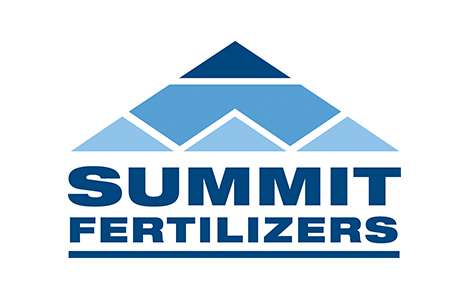
Aims:
To demonstrate the new chickpea herbicide Balance from Aventis for broadleaf weed control.
Aims:
To investigate the effectiveness of BTH (benzothiadiazole) to increase a crops resilience to disease.
Aims:
To Increase producer awareness of the potential issues and management strategies to deal with oestrogenic clover.
Aims:
To demonstrate a new wheat herbicides Hussar® from Aventis, and Affinity® from CropCare for grass and broadleaf weed control.
Aims:
The aim was to demonstrate a new cereal broadleaf weed herbicide 'Paragon' from Cyanamid
Aims:
To answer the question 'Why are there so many sick crops in the Victorian Southern Mallee in 1995?'
Aims:
The trial aims to explore rotational options for the South-East region with the aim of improving yield and water use efficiency of these and the subsequent crops.
Aims:
Aims:
To test new fertilisers at Marnoo.
Aims:
Aims:
To inform about the 1995 farm bill.
Aims:
Aims:
To comment on the year that was 2006.
Aims:
To review the broadscale weather pattern and summarise implications for the 2007 cropping season, i.e. May-October.
Aims:
To assess the crop enhancement effects of Moddus Evo and Amistar Xtra when used in combination. Whilst Moddus Evo is a PGR that is pending registration for anti-lodging and Amistar Xtra is a superior fungicide both these products have been shown to individually contribute to yield increases beyond anti lodging and disease control respectivel… read more
Aims:
To assess the yield of the plant growth regulator (PGR), Moddus Evo and foliar fungicides Amistar Xtra, Cogito and experimental in furrow fungicide SYNSIF1 when used in barley. Previous work has shown that when combining PGRs with good quality fungicides yield and return on investment can be significantly enhanced in cereal crops grown in high r… read more
Aims:
To report on the outcomes of the 2014 Rural Finance Crop Challenge.
Aims:
There appears to be renewed interest from growers and the agricultural community in legume break crops to complement canola and cereals in the rotation. For example in the Esperance region a number of farmers bulked up lentil seed in 2016 in anticipation of sowing larger areas in 2017. This paper summarises some of the experiments conducted in 2… read more
Aims:
The trial has 6 treatments with 4 replications and compares various BioAg products and rates against an annual application of single super.
Aims:
The BioAg fertiliser trial was established in 2019. The trial has 6 treatments with 4 replications and compares various BioAg products and rates against an annual application of single super.
Aims:
Aims:
To identify the severity of K deficiency in broad-acre crops in respect to the Colwell K level in the top 10 cm of soil.
Aims:
To identify the severity of K deficiency in broad-acre crops in respect to the Colwell K level in the top 10 cm of soil.
Aims:
To identify the severity of K deficiency in broad-acre crops in respect to the Colwell K level in the top 10 cm of soil.
Aims:
To identify the severity of K deficiency in broad-acre crops in respect to the Colwell K level in the top 10 cm of soil.
Aims:
Investigate strategies for correcting K deficiency in broad-acre crops.
Aims:
To identify the severity of K deficiency in broad-acre crops in respect to the Colwell K level in the top 10 cm of soil.
Aims:
To identify the severity of K deficiency in broad-acre crops in respect to the Colwell K level in the top 10 cm of soil.
Aims:
To identify the severity of K deficiency in broad-acre crops in respect to the Colwell K level in the top 10 cm of soil.
Aims:
To identify the severity of K deficiency in broad-acre crops in respect to the Colwell K level in the top 10 cm of soil.
Aims:
To identify the severity of K deficiency in broad-acre crops in respect to the Colwell K level in the top 10 cm of soil.
Aims:
To determine what is the best way to apply nutrients on non-wetting soils after amelioration in the
Geraldton port zone (GRDC RCSN project).
Aims:
To observe the development of wheat varieties through breeding over the last 100 years.
Aims:
To est alternative products to Mesurol that are commercially available both in Australia and overseas, to assess their effectiveness as bird deterrents.

Aims:
To capture some of these realities and provide an indication of how the different systems compare in physical and economic terms.
Aims:
This was the first year of an intended long term trial investigating the effect of K nutrition on sandplain. Potassium was applied at rates between zero and 100 kg/ha IBS and banded in the forms of MOP and compound NPK product (Vigour).

Aims:
The aim of this investigation was to use the cropping systems simulator APSIM to assess the impact of high levels of sodicity chlorine, electrical conductivity and boron on the growth and yield of a wheat crop (cv. Yitpi) grown in the BCG Systems Trial.
Aims:
To produce an Endnote-generated txt file database of research on trace elements in cropping systems of south eastern Australia.
Aims:
To quantify the main factors limiting grain yield in a water-repellent sandy gravel soil.
Aims:
To report on a case study of lessons learned about growing perennial pastures.
Aims:
To determine if DGT could predict P fertiliser requirements for the field and to compare results from the DGT soil P test with other common soil P testing techniques (Colwell P and resin).
Aims:
Some districts in NSW and Victoria are known to frequently develop Sclerotinia stem rot. The purpose of conducting the petal survey was to identify if there are significant differences in the level of petal infestation between districts where the disease develops frequently, compared with those districts where the disease develops once every few… read more
Aims:
A review of copper deficiency in the region and procedures for correcting it in wheat.

Aims:
To completely review the standard approach to the sheep enterprise.
Aims:
To work out what the limiting factors to production are on the sodic soils of the Tyrell land system.
Aims:
To discuss how a slow release boron phosphate to mitigate boron deficiency in high rainfall environments.
Aims:
To report on the development of a technique to visualise the movement of zinc from a controlled release fertiliser.
Aims:
To report on a three year strategy to manage clethodim resistant ryegrass without oaten hay.
Aims:
To discuss abiotic stresses of cool season pulses in Australia.
Aims:
To test pre-harvest treatments in order to accelerate the ripening and harvest of barley in a double cropping sitution.
Aims:
To deal with the issue of sustainable agriculture.
Aims:
To provide information for the growing farmer interest in subsoil manuring during the year with data and information on demonstration trials on subsoil manuring on heavy clay and duplex soils where the plant available water capacity at depth is restricted by low porosity, water extraction and root growth.
Aims:
To evaluate the acid and aluminium tolerance of new and existing barley varieties.
Aims:
The objective of the project was to work with landholders in the region to increase their capacity and knowledge to productively and sustainably manage their soil by developing a snapshot of the extent of acidity on their properties.
Aims:
To evaluate the performance of Litmus (WABAR2625) barley in comparison to Hindmarsh and Wyalkatchem on an acidic soil.
Aims:
Aims:
The aim of this trial was to to compare commercial faba bean rhizobia inoculant with new acid tolerant strains from SARDI and the Department of Primary Industries and Regional Development (DPIRD), WA.
Aims:
To present results from the large plot focus farm trials of the Maintaining profitable farming systems with retained stubble in the Riverine Plains region project, which where to
Aims:
Aims:
The project seeks to:
Aims:
The project seeks to:
Aims:
To investigate the response of new faba bean varieties and genotypes to sowing dates.
Aims:
To gain knowledge that will allow the Australian grains industry to maintain productivity by adapting crops and cropping systems to the effects of elevated CO2.
Aims:
To recommend options to improve;
• soil nutrients and groundcover, and
• reduce disease levels and chemical use.
Aims:
To evaluate field pea breeding lines ranging in their glass house tolerance to boron and salinity, for their ability to perform under high field soil boron levels. The same lines were also evaluated in the same paddock at Minnipa but on a contrasting site where lower boron levels were identified.
Aims:
To investigate options for pasture and fodder break crops for southern Victoria with an emphasis on weed control.
Aims:
To investigate options for pasture and fodder break crops for southern Victoria with an emphasis on weed control.
Aims:
To improve our understanding of what is driving these responses and how soil modification techniques can be improved on sandy profiles.
Aims:
To discuss adjuvant choice for atrizine for best control of radish in TT canola.
Aims:
Aims:
Aims:
• To define the expression of Adult Plant Resistance (APR) in a range of wheat cultivars in relation to environmental conditions and growth stage.
• To develop improved strategies for intervention with fungicides in the control of stripe rust and yellow leaf spot in susceptible and resistant wheat, and the communication of the strateg… read more
Aims:
Aims:
To explore adult plant resistance and strategic fungicide use for integrated management of cereal rust
Aims:
To conduct an advanced barley variety evaluation.
Aims:
To present the results of the advanced long season wheat variety trial.
Aims:
To evaluate improved lupin varieties for the Victorian Mallee.
Aims:
The aim of this trial was to exaluate and develop improved lupin varieties for the Victorian Mallee.
Aims:
This soybean experiment, conducted at the NSW DPI Leeton Field Station, tested the response of 26 advanced-stage lines and four commercial varieties at two sowing times
Aims:
To conduct an advanced vetch variety evaluation.
Aims:
To evaluate improved vetch varieties for the Victorian Mallee.
Aims:
Aims:
To develop, evaluate and release improved wheat cultivars to the farming community.
Aims:
To conduct an advanced wheat variety evaluation.
Aims:
To develop, evaluate and release wheat cultivars which maximise economic return to the farming community.
Aims:
To report on the advanced winter wheat trials at Tatyoon.
Aims:
To discuss the benefits of using aeroplanes for monitoring purposes in cropping.
Aims:
Varied. Please see article.
Aims:
Aims:
Aims:
To trial and demonstrate two possible agronomic adaptations to a changing climate:
Aims:
To benchmark yield potential across a range of growing environments in the NGR of NSW, over two consecutive seasons, and to quantify the impact of genotype, management and environment on yield.
Aims:
The aim of this research was to benchmark yield potential across a range of growing environments in the NGR over two consecutive seasons, and to quantify the effect genotype (G), management (M) and environment (E) had on yield.
Aims:
The aim of this trial was to investiage the best management practices for the production of Biscuit wheats.
Aims:
To understand the effects of stubble, row spacing and row direction on plant growth, grain yield and pod drop of lentil varieties differeing in architecture and tolerance to pod drop.
Aims:
To understand the effects of row spacing and row direction on plant growth, grain yield and pod drop of lentil varieties differeing in architecture and tolerance to pod drop.
Aims:
To understand the effects of stubble, row spacing and row direction on plant growth, grain yield and pod drop of lentil varieties differeing in architecture and tolerance to pod drop.
Aims:
To discuss agronomic practices – frost risk rankings table.
Aims:
Development of best management practices to increase the production of high-quality grade peanut kernels
Aims:
To determine the agronomic response of sorghum to N management, to help develop more robust soil test/crop response guidelines.